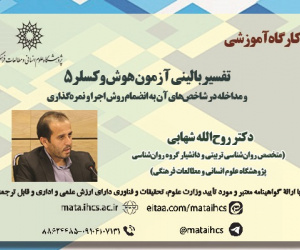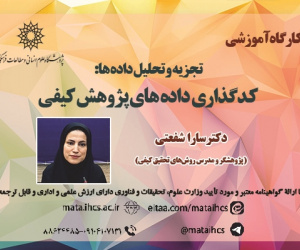مراحل «حمل» از منظر قرآن کریم و دانش پزشکی
آرشیو
چکیده
قرآن کریم در آیات متعددی به بیان مراحل رشد انسان پرداخته است و دانش پزشکی نوین نیز با بهره گیری از تجهیزات پیشرفته، این مراحل را در جنین موجود در رحم تأیید کرده است. هدف این مقاله، تبیین مراحل شکل گیری جنین از دیدگاه قرآن کریم و علم پزشکی است؛ به گونه ای که با شناخت دقیق این مراحل، جلوه ای از شگفتی های قرآن برای انسان آشکار شود و ایمان و باور او به خالق هستی و معجزه جاودانه الهی، یعنی قرآن کریم، استوارتر گردد. روش تحقیق در این پژوهش، بنیادی و به شیوه توصیفی-تحلیلی است و با استفاده از فیش برداری از منابع کتابخانه ای انجام شده است. این پژوهش در پی پاسخ به این پرسش اصلی است که: مراحل حمل از منظر قرآن کریم و دانش پزشکی چگونه تبیین می شود؟ و بدین نتیجه دست یافته، که مراحل حمل در قرآن کریم عبارت است از: نطفه، علقه، مضغه (مخلقه و غیر مخلقه)، عظام، لحم، نفخ روح؛ و مراحل حمل از اولین ماه قرار گرفتن نطفه مرد در رحم همسر تا نهمین ماه در علم طب نیز، عبارت است از: حالت منی (کف گونگی)، حالت خونی، حالت استحاله و تبدّل منی به صورت علقه حالت مضغه (پاره گوشت)، حالت درست شدن قلب و حالت ششم ساخته شدن اطراف (دست و پا). اگرچه هر یک از این مراحل حائز اهمیت و مملو از شگفتی است و یافته های دانش پزشکی به روشنی تأییدی بر داده های آیات قرآن است، اما مهم ترین مرحله در میان مراحل حمل، نفخ روح است که دانش پزشکی توجه خاصی به این مرحله از خلقت انسان نشان نداده است.The Stages of Pregnancy (Haml) in the Perspective of the Holy Quran and Medical Science
The Holy Quran has discussed the stages of human development in several verses, and modern medical science, utilizing advanced equipment, has confirmed these stages in the development of the fetus within the womb. This article aims to elucidate the stages of embryonic formation from the perspective of the Holy Quran and medical science, such that a profound understanding of these stages reveals the wonders of the Quran to humanity, strengthening their faith and belief in the Creator of existence and the eternal divine miracle – the Holy Quran. The research method employed in this study is fundamental and descriptive-analytical, conducted through a bibliographic review of library resources. This research seeks to address the central question: How are the stages of pregnancy explained from the perspective of the Holy Quran and medical science? It concludes that the stages of pregnancy in the Quran are: nutfah (drop of fluid), alaqah (clot-like form), mudghah (chewed-like morsel, including both formed and unformed states), bones (formation of the skeletal structure), flesh (covering bones with muscle/tissue), and blowing of the soul (ensoulment). In medical science, the stages span from the first to the ninth month and include: semen state (clot-like appearance), blood state, transformation state (conversion of semen into alaqah/mudghah), mudghah state (flesh-like appearance), heart formation , and limb development (hands and feet). While each of these stages holds significance and is filled with marvels, and medical discoveries clearly confirm Quranic descriptions, the most critical stage in fetal development is the blowing of the soul, a phase that modern medical science does not specifically address in human creation.








